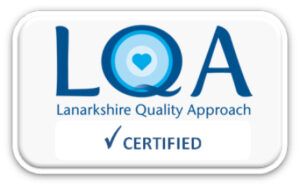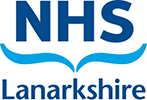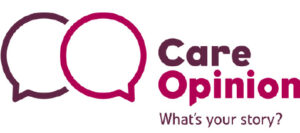Naso-Gastric Feeding Guide
Information for patients
NHS Lanarkshire Nutrition and Dietetics Department
PIL.NASOGA.60744.L
Naso-gastric Feeding
You are currently unable to take enough food and fluid by mouth to meet your nutritional needs or you may be unable to take any food or fluids by mouth at all. The nasogastric feeding tube will enable you to meet your nutritional needs by feeding you directly into your stomach.
Naso-gastric tubes are used for short term feeding.
Naso-gastric feeding tubes
There are different types and sizes of naso-gastric feeding tube available. The finer tubes are more comfortable.
You will be informed by the hospital staff who placed the tube when it will need to be changed.
If your tube becomes blocked please refer to the Trouble shooting guide on page 6 for further advice on how to unblock this.
If your tube becomes blocked please refer to the Trouble shooting guide on page 6 for further advice on how to unblock this.
If your tube comes out you can contact your Feeding company nurse who will be able to replace this for you Monday-Friday 9am-5pm. If the tube comes out out-with these hours and you are able to maintain your hydration orally wait until the next day and make contact with the feeding company nurse or dietitian. However if the tube comes out and you are nil by mouth and unable to meet your hydration needs then your dietitian will have given you specific instructions of what to do in this instance.
If you attend the Head and Neck service and your tube comes out before you can be seen in the head and neck treatment room then you should attend A&E at the University Hospital Monklands.
Care of Naso-gastric feeding tube
Wash your hands thoroughly before and after handling the feeding system.
Effective care of your tube is vital for your well being. The aim is to prevent your tube blocking.
To prevent your tube getting blocked it is important to flush with 30 – 60mls of cooled boiled water before and after your feed.
If you give medication down your tube it must preferably be in a suitable form, please discuss this with your pharmacist. Remember to flush your tube before and after medication with 30 – 60 mls of cooled boiled water.
If several mediations are going down your tube flush with 5 -10mls of cooled boiled water between each medication.
Checking Naso-Gastric Tube Position
Before starting your feed or giving medication through your tube, if it is at a separate time from your feed, it is important to check the position of the tube by checking the pH of your stomach contents. You will be shown how to do this.
Mark the position of the tube where it comes out of your nose.
This can be done using a pen mark or a piece of tape.
Check this mark each time you use the tube if it is further out your tube may have moved position.
To check position of your tube in the stomach:
- Attach a 60mls syringe to your tube and draw out a small amount of your stomach contents.
- Test this for acidity using pH specific paper which you will be given for this purpose.
- The reading should record an acid pH of 5.5 or below. If so it is safe to feed.
If stomach contents cannot be obtained
- Check your tube length to see if your tube appears to have moved since it was first put in.
- Turn onto your left side if this is possible.
- Inject air into your tube 10 – 20 mls. Wait 15-30 minutes and try again.
- Draw back the syringe to obtain stomach contents.
- Alternatively, if you are allowed, take a drink of coloured liquid and try again.
- If stomach contents still cannot be obtained contact your district nurse or health professional.
If a pH of more than 5.5 is measured
- Check with your doctor if you are on acid inhibiting drugs.
- Wait at least an hour after your last feed and try again.
- If the ph still remains above 5.5 do not feed and contact your district nurse or health professional.
Trouble Shooting Guide
| Problem | Possible Cause | Solution |
|
Tube will not flush. |
|
If all of the above are unsuccessful contact your feeding company nurse or health professional. |
|
GI problems e.g. nausea and vomiting Diahorrea. Constipation. |
|
|
|
Gastric Reflux |
|
|
|
If feeding tube comes out or dislodged. |
Contact your health professional to arrange for readmission to have tube re-inserted. |
Instructions on using your reusable syringe
- The syringes you have been given can be reused for up to seven days.
- Clean your syringe straight after use
- Fill a bowl with hot soapy water
- Clean the end of the syringe by drawing the water in and out through the syringe until all traces of food or medicine are removed from the tip.
- Separate the two parts of the syringe and wash them.
- Then rinse them in water under the cold tap.
- Shake off the excess water and dry with a clean paper towel. Tapping the end of the syringe on a clean paper towel will dislodge any water that maybe still in the tip of the syringe.
- Store the syringe, still separated in a clean dry container.
- Put the syringe back together when you need to use it.
- You will usually be given one syringe for medicine and one for flushing cooled boiled water through your tube
- If while you are using your syringe it becomes stiff or difficult to use, or if you can see any damage to the syringe or the markings become unclear you should throw it away and start to use a new one.
Pub. date: October 2020
Review date: October 2022
Issue No: 03
Reference: PIL.NASOGA.60744.L
21_06007
If you need this information in another language or format, please e-mail:





